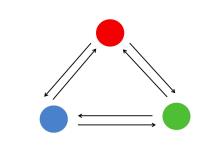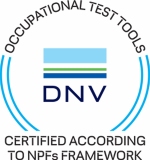
Team and project work
Our market surveys indicate that the use of the Diversity Icebreaker in team and project work is one of the tool's most frequent areas of application.
In order to succeed, the team members need to be aware of their similarities and differences, acknowledge each other's uniqueness and be clear about the roles and processes they operate within.
The Diversity Icebreaker can bring a unique value to team-building and team-development processes:
- the positive atmosphere of the workshop and the Diversity Icebreaker's three colours (Red, Blue and Green) complementary and egalitarian character makes the process of mapping differences in the team a painless, functional and a remarkable experience;
- it can serve as an alternative team role model: Red, Blue and Green bear relevance to different tasks and responsibility areas and can be used to better understand nature of the different stages of team-work and help to create a self-managed team;
- the shared language created by the participants in the workshop adds a new value, enhancing clear communication and shared identity.
The Diversity Icebreaker classic workshop and follow-up activities can be applied to start a new team from scratch as well to revitalise or help a well functioning one in becoming even better.
► Case studies
Read a case study where the Diversity Icebreaker was used to establish ground for clarification of key business processes in cross-professional teams in a research oriented pharmaceutical company. The case features an interesting application of one- and multi-colour workshop groups in follow-up exercises after the workshop.
More case studies

 Red, Blue and Green - the Diversity Icebreaker's three dimensions - can be looked upon as three different communication styles. The three colors can be applied in group exercises (workshop-groups with participants with the same or mixed preferences), for individual development (role-play exercises), and in communication strategies on organizational level.
Red, Blue and Green - the Diversity Icebreaker's three dimensions - can be looked upon as three different communication styles. The three colors can be applied in group exercises (workshop-groups with participants with the same or mixed preferences), for individual development (role-play exercises), and in communication strategies on organizational level.










